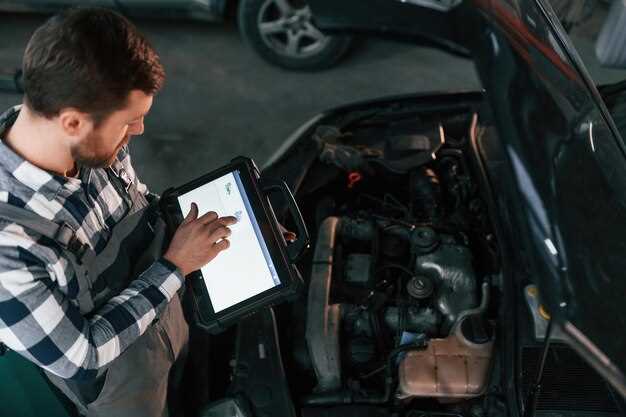
In the realm of automotive repair and maintenance, having the right tools at your disposal can make all the difference. For car enthusiasts, diagnostic tools such as an OBD2 scanner are not just accessories; they are essential components of a well-equipped garage. These tools help identify problems, monitor performance, and aid in the tuning of vehicles, ultimately enhancing the driving experience.
An OBD2 scanner connects to your vehicle’s onboard diagnostics system, allowing you to access vital information about engine performance and emissions. It provides real-time data that helps enthusiasts understand their vehicles better and make informed decisions regarding repairs and upgrades. Whether you are a DIY mechanic or just someone who wants to maintain their car with precision, having an OBD2 scanner handy is indispensable.
Moreover, the evolution of automotive technology demands that enthusiasts stay updated with the latest in diagnostic tools. From basic code readers to advanced scanners capable of performing complete system diagnostics, the market offers a plethora of options tailored to every need. Understanding the importance of these tools is the first step towards tackling automotive issues effectively and enhancing your overall driving experience.
Understanding OBD2 Scanner Functions
An OBD2 scanner is an essential tool for car enthusiasts, enabling detailed diagnostics of vehicle performance and health. The onboard diagnostics version 2 (OBD2) system provides standardized trouble codes that help identify issues across various car makes and models. Understanding the functions of an OBD2 scanner is crucial for effective diagnostics.
One of the primary functions of an OBD2 scanner is to read and interpret diagnostic trouble codes (DTCs). When a vehicle’s onboard computer detects a fault, it generates a code that can be retrieved using the scanner. These codes can indicate issues ranging from minor sensor problems to severe engine malfunctions. Clearing codes after repairs is another important function, allowing the user to reset the system and monitor if the issue reoccurs.
In addition to reading codes, OBD2 scanners can display live data from various sensors in real-time. This feature enables users to monitor engine performance, fuel efficiency, and other critical parameters while the vehicle is running. This live data can help enthusiasts make informed decisions about vehicle maintenance and performance upgrades.
Another vital aspect of OBD2 scanners is their ability to perform smog checks and emissions tests. Many regions require vehicles to meet certain emissions standards, and an OBD2 scanner can help diagnose issues that might cause a vehicle to fail these tests. By providing insights into the emissions system, enthusiasts can take proactive steps to ensure compliance.
Additionally, advanced OBD2 scanners offer special functions such as recalibration of components, programming new keys, and service resets. These features are particularly beneficial for those who like to customize or modify their vehicles. Understanding these functions can enhance the overall driving experience and vehicle performance.
In conclusion, OBD2 scanners are invaluable tools for car enthusiasts, offering comprehensive diagnostics through code reading, live data monitoring, and specialized functions. Mastering the use of an OBD2 scanner empowers users to maintain their vehicles efficiently and address potential problems before they escalate.
Choosing the Right OBD2 Scanner for Your Vehicle
Selecting the appropriate OBD2 scanner is crucial for effective vehicle diagnostics. With a variety of models available, it’s essential to understand the key features and functions that will best meet your needs.
Here are some important factors to consider when making your choice:
- Compatibility: Ensure that the scanner is compatible with your vehicle’s make and model. Most OBD2 scanners work with vehicles manufactured after 1996, but there may be exceptions. Check the user manual for compatibility information.
- Functionality: Determine the diagnostics functions you require. Basic models typically read and clear trouble codes, while advanced scanners offer live data, freeze frame data, and advanced diagnostic capabilities.
- Ease of Use: Look for a scanner with an intuitive interface. A clear display and user-friendly navigation can greatly enhance your diagnostics experience.
- Price: Set a budget for your scanner purchase. Basic scanners are generally affordable, while high-end models with extensive features can be significantly more expensive. Analyze your needs versus your budget.
- Updates and Support: Choose a scanner that offers regular software updates. This ensures that your device remains compatible with the latest vehicle models and diagnostic protocols. Additionally, good customer support can be invaluable.
- Brand Reputation: Research brands known for their reliability and effectiveness in the automotive industry. User reviews can provide insight into the performance and durability of the scanner.
By focusing on these key factors, car enthusiasts can select an OBD2 scanner that not only meets their diagnostic needs but also enhances their understanding and maintenance of their vehicles. Whether you are a DIY mechanic or simply want to keep tabs on your car’s health, the right scanner is an essential tool in your automotive arsenal.
Interpreting Diagnostic Trouble Codes (DTCs)

When it comes to understanding vehicle issues, interpreting Diagnostic Trouble Codes (DTCs) is essential for car enthusiasts. DTCs are standardized codes that reveal the state of a vehicle’s systems and components. These codes can be retrieved using an OBD2 scanner, which communicates with the onboard diagnostic system to provide valuable insights into potential problems.
Each DTC consists of five characters, with the first character indicating the system affected. The letter ‘P’ typically signifies powertrain issues, while ‘B’ relates to body systems, ‘C’ refers to chassis, and ‘U’ indicates network issues. Following the letter, a four-digit number pinpoints the specific problem area.
For instance, a code of P0171 indicates a lean fuel mixture in the engine. This information directs enthusiasts towards areas like the fuel system, air intake, or sensors for further investigation. Understanding these codes not only helps in diagnosing problems but also aids in communicating issues effectively with professional mechanics.
Using an OBD2 scanner allows car enthusiasts to enhance their DIY repair skills. After retrieving a DTC, it’s crucial to reference reliable repair databases or manufacturer-specific documentation to better understand the context of the code. Some tools even offer real-time data, enabling users to track performance metrics that may contribute to the DTC.
In summary, interpreting DTCs using an OBD2 scanner is a powerful skill for any car enthusiast. Mastering this aspect of vehicle diagnostics not only leads to faster repairs but also enhances overall automotive knowledge and expertise.
Real-Time Data Monitoring with OBD2 Scanners
OBD2 scanners have revolutionized the way car enthusiasts monitor their vehicles’ performance. These tools provide real-time data that is critical for diagnosing issues and optimizing engine function. By connecting to the car’s onboard computer, OBD2 scanners retrieve a wealth of information, including vehicle speed, engine temperature, RPM, and fuel efficiency.
One of the key benefits of using an OBD2 scanner is the ability to track live data while driving. This real-time monitoring allows enthusiasts to observe how the vehicle responds under different conditions, such as acceleration or idling. By analyzing this data, users can identify potential problems early, preventing costly repairs down the line.
Moreover, OBD2 scanners offer customizable display options, enabling users to prioritize the information they find most relevant. Many models come equipped with smartphone connectivity, allowing users to access data through mobile applications, enhancing the overall functionality and usability.
For car enthusiasts, utilizing an OBD2 scanner for real-time data monitoring is essential. It not only supports effective vehicle maintenance but also adds to the joy of driving by providing insights into engine performance, thereby enhancing the overall driving experience.
Performing Advanced Diagnostics: Beyond Basic Codes

In the world of automotive diagnostics, OBD2 systems have become the standard for monitoring vehicle performance. However, merely reading trouble codes is not sufficient for car enthusiasts looking to gain deeper insights into their vehicle’s health. Advanced diagnostics extend beyond basic codes, allowing for a more comprehensive understanding of the vehicle’s systems.
Data Parameters and Live Monitoring
One of the key features of advanced OBD2 diagnostics is the ability to monitor live data parameters. Unlike basic code readers that only provide error codes, advanced diagnostic tools can display real-time data from various sensors. This includes information on engine RPM, coolant temperature, fuel trim, and more. By analyzing this data, enthusiasts can identify trends and anomalies that may indicate underlying issues.
Graphing and Data Logging
Advanced diagnostic tools often offer graphing capabilities, which allow users to visualize data over time. This is particularly useful for tracking performance metrics during specific driving conditions. Data logging features can record sensor information, providing a more comprehensive picture of how systems operate under various scenarios. This data can help pinpoint intermittent problems that are difficult to diagnose with static readings.
Manufacturer-Specific Codes and Enhanced Protocols
Beyond generic OBD2 codes, many advanced diagnostic tools access manufacturer-specific codes and protocols. This enables the detection of issues unique to certain makes and models. With this knowledge, car enthusiasts can troubleshoot problems that generic diagnostics may overlook, saving time and preventing unnecessary repairs.
System Tests and Bi-directional Control
Advanced diagnostics also provide the capability to perform system tests and bi-directional control functions. This includes testing components such as the fuel injector circuits or ABS systems without the need for manual intervention. Users can activate or deactivate systems, making it easier to verify repairs or diagnose complex issues without disassembling parts of the vehicle.
Reset Functions and Adaptation Procedures
After completing repairs, enthusiasts can utilize advanced diagnostic tools to reset fault codes and perform adaptation procedures. For example, resetting the ECU after replacing sensors or performing a transmission fluid change ensures that the vehicle’s computer can recalibrate and operate optimally. These functions are crucial for maintaining vehicle performance and longevity.
In conclusion, going beyond basic OBD2 diagnostics allows car enthusiasts to delve deeper into the intricacies of their vehicles. By utilizing advanced tools that monitor live data, access manufacturer-specific codes, and perform system tests, automotive aficionados can enhance their diagnostics capabilities, leading to more informed decisions and improved vehicle maintenance.
Maintaining Your OBD2 Scanner for Longevity
To ensure your OBD2 scanner remains functional and effective for a long time, regular maintenance is essential. Proper care can enhance its performance and accuracy in diagnostics. Here are some key practices to adopt.
1. Keep it Clean: Dust and debris can interfere with the scanner’s connectors and ports. Use a soft cloth to wipe down the device regularly, and make sure the connections are free of dirt.
2. Store Properly: When not in use, store your scanner in a protective case or pouch. Avoid exposing it to extreme temperatures or direct sunlight, as these can damage the internal components.
3. Update Software: Manufacturers often release firmware updates that enhance functionality and fix bugs. Regularly check for updates to ensure your scanner remains equipped with the latest diagnostics capabilities.
4. Calibration: Some scanners require calibration to ensure they provide accurate readings. Refer to the manufacturer’s guidelines for how and when to calibrate your device.
5. Handle with Care: Avoid dropping or mishandling your scanner. Treat it as a delicate instrument; rough handling can lead to internal damage that affects diagnostic accuracy.
6. Check Cables and Connectors: Regularly inspect cables and connectors for wear and tear. Damaged cables can lead to poor connectivity, affecting the scanner’s performance. Replace any damaged components promptly.
7. Battery Maintenance: If your OBD2 scanner is battery-operated, monitor the battery life regularly. Replace batteries as needed to prevent unexpected shutdowns during diagnostics.
By following these guidelines, you can extend the lifespan of your OBD2 scanner and ensure it continues to provide reliable diagnostics, helping you keep your vehicle in top condition.
